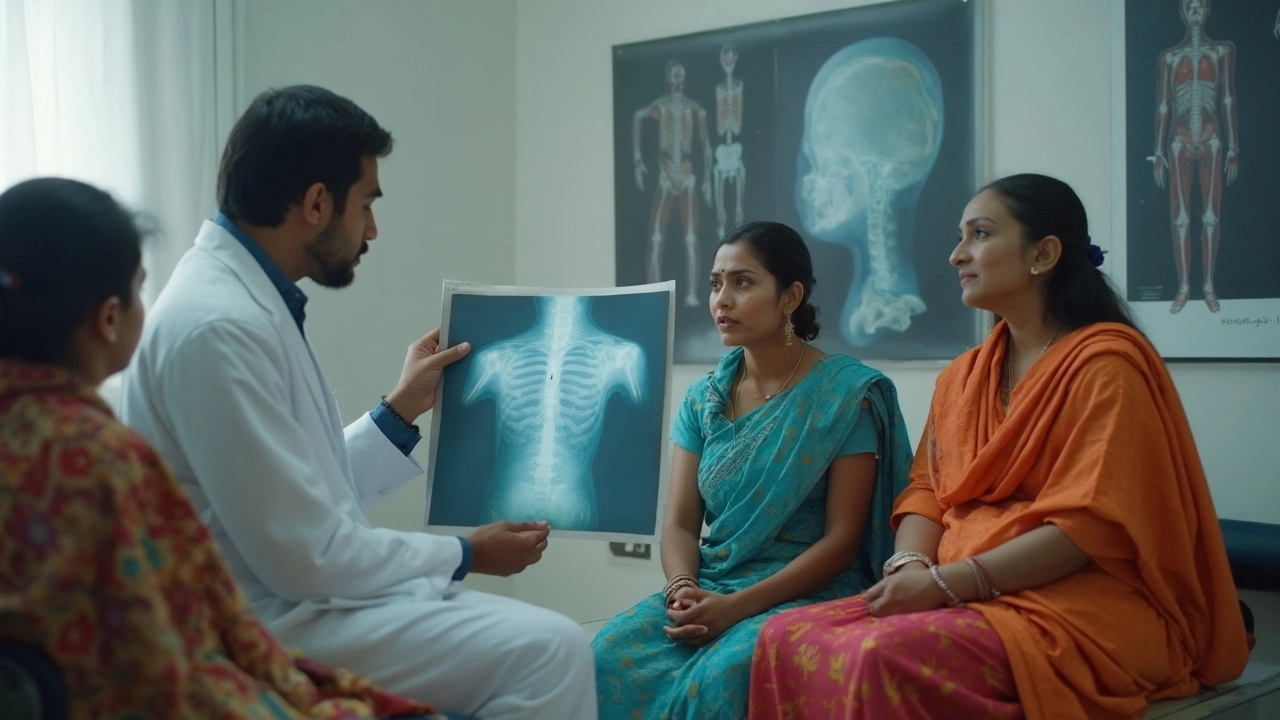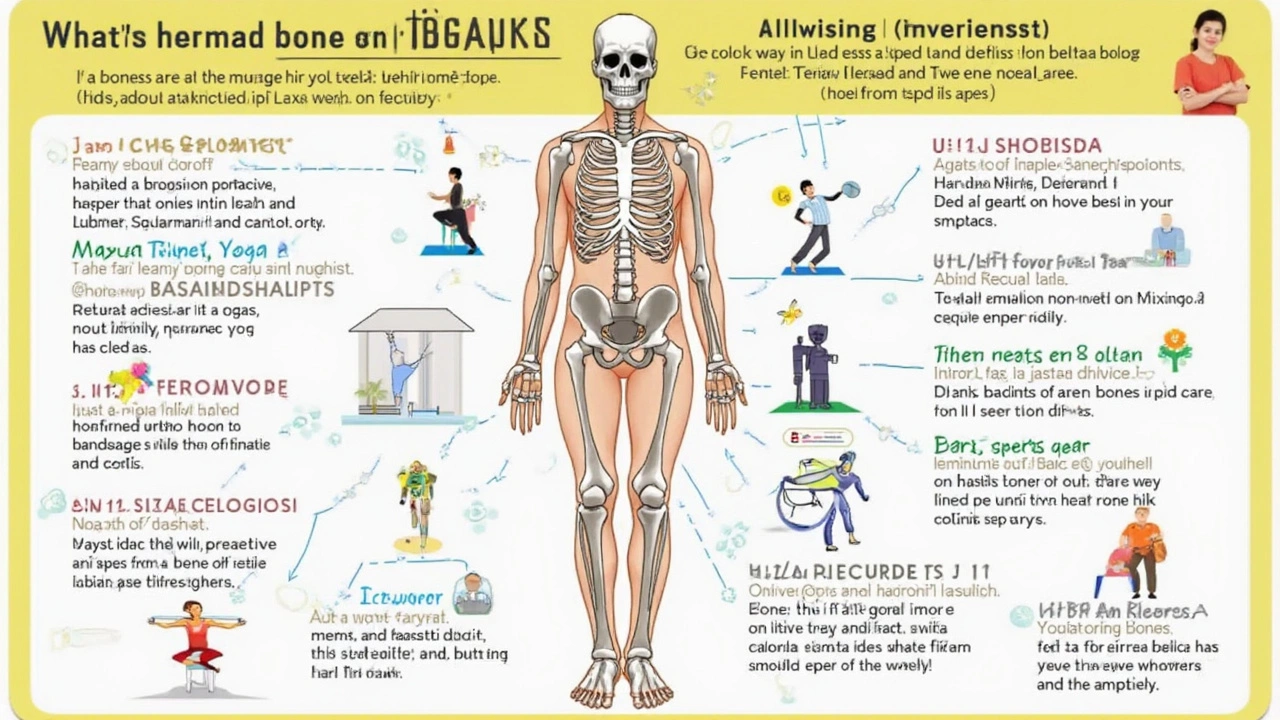
If you’ve ever twisted an ankle, strained your back, or wondered what makes your joints creak, you’ve brushed up against the world of orthopedics. Orthopedics is all about bones, joints, ligaments, tendons, and muscles—the stuff that holds you together and keeps you moving. These doctors aren’t just for athletes or folks with broken arms. They handle anything from everyday knee pain to complex spine surgeries.
People often think orthopedic hospitals only treat broken bones, but that’s just the tip of the iceberg. Orthopedics covers everything your body uses to stand, sit, walk, or even wiggle your toes. Think of them as the mechanics for the human body—if something clicks, pops, aches, or won’t move, they’re the team you want on speed dial.
- The Essentials: What Orthopedics Cover
- Bones, Joints, and Beyond
- Common Problems and Treatments
- When Should You See an Orthopedic Specialist?
- Everyday Tips for Strong Bones and Joints
The Essentials: What Orthopedics Cover
When you walk into an orthopedic hospital, you’re stepping into a place focused on the mechanics of your body. Orthopedic doctors deal with everything connected to your bone health, joints, ligaments, tendons, and muscles. If it helps your body hold together or move, they’ve got it covered.
Here’s what really falls under the orthopedic umbrella:
- Bones: Fractures, bone diseases like osteoporosis, bone infections, and bone tumors.
- Joints: Arthritis, dislocations, torn cartilage, and joint replacement surgeries for hips, knees, and shoulders.
- Muscles and Tendons: Strains, tears (like rotator cuff injuries), and diseases that make muscles weak.
- Ligaments: Sprains, ACL tears, and those jumps-gone-wrong that twist your knee or ankle.
- Spine: Back pain, slipped discs, and scoliosis (curved spine).
They don’t just patch you up and send you home. Orthopedics also covers making sure your parts work right after injury or surgery, so physical rehab is a huge part of the field. For a lot of folks, this means getting back on your feet faster and with less pain.
Most orthopedics also keep a close connection with sports medicine. So if you’re a weekend warrior or your kid loves soccer, these are the pros who’ll get you back in the game when something goes wrong.
If you’re ever in doubt about what hurts—shoulder, wrist, knee, or back—don’t guess. Chances are, it’s something covered by orthopedic care.
Bones, Joints, and Beyond
When folks talk about orthopedics, most picture bones—and fair enough, those are the basics. But these specialists look after way more than just your skeleton. They also handle joints (like your knees and shoulders), muscles, ligaments, and tendons. These parts work together to help you move, lift, or even just stand up straight.
Let’s break it down further. Your bones give your body structure. Joints connect those bones, letting you bend and twist. Muscles power movement, while ligaments (think of them as ropes) tie bones together at joints. Tendons act like anchor lines, connecting muscles to bones.
Here’s a snapshot of what orthopedic hospitals tackle pretty much every day:
- Bones: Broken bones, stress fractures, osteoporosis, bone infections.
- Joints: Arthritis, dislocations, joint replacements (like hips or knees), cartilage injuries.
- Ligaments and Tendons: Tears, sprains, ruptures—things like ACL tears in the knee or rotator cuff problems in the shoulder.
- Muscles: Strains, tears, and chronic pain issues.
- Other: Accident injuries, congenital issues, and anything messing with the way you move.
Orthopedics isn’t just for emergencies. Lots of people see them for long-term stuff, like back pain or stiff joints. In India, data from 2023 shows that knee replacements are becoming more common, with over 200,000 done each year—a sign more folks are looking to stay active later in life.
Fun fact: The average adult has 206 bones. Your hands and feet alone have more than half of those! That’s a lot to keep in line, which helps explain why bone health and joint care matter so much.

Common Problems and Treatments
When you hear about orthopedics, think broken bones, painful joints, sprained ankles, and worn-out hips. These are just some of the problems orthopedic hospitals tackle daily. Let's break down the common issues and how doctors fix them.
- Fractures and Breaks: Falls and accidents often lead to broken bones. Orthopedic doctors use casts, splints, or sometimes surgery with metal plates and screws to set things right. Healing time depends on where and how bad the break is — for example, a wrist fracture may take about 6 weeks, but a thigh bone might need a few months.
- Osteoarthritis and Joint Pain: Knees, hips, and shoulders can wear down over time. You might feel pain, stiffness, or swelling. Treatments usually start simple: rest, ice, pain medicine, and physical therapy. If things get bad, doctors might recommend joint injections or even surgery to replace the joint.
- Sports Injuries: If you twist your knee or pull a muscle during a weekend football game, you’re not alone. Common sports injuries include ligament tears (like ACL tears in the knee), tendonitis, or dislocated shoulders. Treatment ranges from rehab and braces to surgery in tough cases.
- Back and Spine Issues: Back pain is one of the top reasons people visit an orthopedic hospital. Herniated discs, pinched nerves, or scoliosis can slow anyone down. Doctors here focus on pain relief, therapy, and strengthening exercises. Only a small percentage need surgery.
- Carpal Tunnel and Nerve Problems: Tingling and numb fingers might point to carpal tunnel syndrome. Repetitive actions or injuries can squeeze nerves in the wrist or elbow. Treatments can be as simple as wrist braces or as involved as surgery to release the nerve.
Here’s a look at how common some of these problems are:
| Problem | Avg. Annual Cases (worldwide) | Usual First-line Treatment |
|---|---|---|
| Fractures | Over 15 million | Casting/Splinting |
| Knee Osteoarthritis | About 250 million | Therapy/Medication |
| Back Pain | More than 540 million | Physical Therapy |
Most orthopedic issues respond well to simple measures if caught early. Ignoring early pain can turn a quick fix into months of downtime. If something hurts, swells, or feels off for more than a few days, that’s a good reason to chat with an orthopedic specialist.
When Should You See an Orthopedic Specialist?
Most people wait until the pain gets bad before they even consider finding an orthopedic doctor. But the truth is, you don’t need to live with discomfort or risk making things worse by waiting too long. If you hurt a bone, joint, muscle, or even notice everyday pain that just doesn’t quit, it’s time to think about getting help from the experts.
Here are some common situations when you should head straight for an orthopedic hospital or specialist:
- Pain in your bones or joints that lasts more than a few days or keeps coming back
- Difficulty moving a joint, or feeling like your movement is blocked or locked
- Swelling or bruising after a fall, twist, or seemingly minor accident
- Tingling, numbness, or weakness in your arms or legs
- Visible bumps, lumps, or crooked-looking bones after an injury (think broken or dislocated bones)
- Pain that gets worse with activity—like running or even walking up stairs
- Chronic conditions like arthritis, back pain, or old injuries that never properly healed
Some people skip seeing a bone health specialist because they’re afraid it’ll mean surgery. But orthopedics does more than operate. Many treatments involve physical therapy, medication, or simple shots to relieve the pain and get you moving again. By getting checked out early, you can avoid more serious problems down the road.
To give you a clearer idea, here’s a quick look at what usually brings folks to an orthopedic hospital:
| Reason for Visit | Common Causes |
|---|---|
| Persistent joint pain | Arthritis, injury, overuse |
| Back or neck pain | Disc issues, muscle strain, posture |
| Swelling after an injury | Sprain, fracture, ligament tear |
| Sports injuries | ACL tear, shoulder dislocation, stress fractures |
| Limited range of motion | Joint damage, tendon injury, bone spur |
Insurance usually covers orthopedic visits if you’ve got a valid injury or ongoing symptoms, so don’t let cost stop you from getting care. If something just doesn’t feel right with your bones or joints, trust your gut and reach out to an orthopedic specialist. You’ll save yourself a lot of hassle and maybe even a lot of pain in the long run.

Everyday Tips for Strong Bones and Joints
Most people think they have to wait for an injury before they worry about their bone health. But keeping your bones and joints strong is something you can work on every single day, and it doesn’t take fancy tricks. Here’s what works and why orthopedics recommend these tips.
- Keep moving: Simple, regular movement keeps joints happy. Walking, swimming, and cycling are all joint-friendly. If you sit all day (like I sometimes do when writing), take quick stretch breaks to get your blood flowing.
- Get enough calcium and vitamin D: Your bones need both to stay strong and repair themselves. Dairy, green veggies, and sunlight all help. If you’re not getting much sun or dairy, ask your doctor about supplements.
- Watch your weight: Too much weight adds pressure to knees and hips. Losing even a few kilos can reduce the strain on your joints and make movement easier.
- Wear good shoes: Your feet are your foundation. Wearing shoes that fit well and give support can prevent back and knee problems.
- Listen to your body: Don’t push through pain. If something hurts, it’s your body’s way of waving a red flag. Sore joints after new exercise? Ice and rest help. Persistent pain? That’s when you call an orthopedic expert.
Staying hydrated is underrated. Cartilage in your joints is mostly water—a little dehydration can actually make joints stiffer. And believe it or not, bad habits like smoking or too much alcohol aren’t just tough on your organs. They steal nutrients and weaken bones too.
Here’s a quick snapshot that really surprised me the first time I saw it:
| Habit | Impact on Bone & Joint Health |
|---|---|
| 30 minutes walking daily | Reduces risk of hip fractures by ~40% |
| Getting enough vitamin D | Lowers osteoporosis risk, especially after age 40 |
| Losing 5 kg (if overweight) | Takes about 20 kg of pressure off your knees |
You don’t need perfect genetics or a strict gym routine to support your orthopedic health. Day-to-day choices add up. I nudge my wife, Anjali, to take a walk with me in the evening—not just for fresh air, but because our future bones will thank us.





Rohan Talvani
I am a manufacturing expert with over 15 years of experience in streamlining production processes and enhancing operational efficiency. My work often takes me into the technical nitty-gritty of production, but I have a keen interest in writing about medicine in India—an intersection of tradition and modern practices that captivates me. I strive to incorporate innovative approaches in everything I do, whether in my professional role or as an author. My passion for writing about health topics stems from a strong belief in knowledge sharing and its potential to bring about positive changes.
view all postsWrite a comment